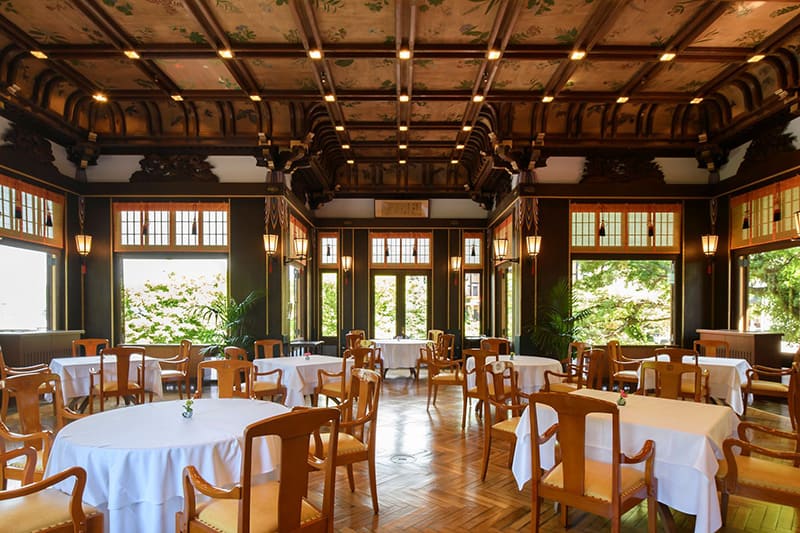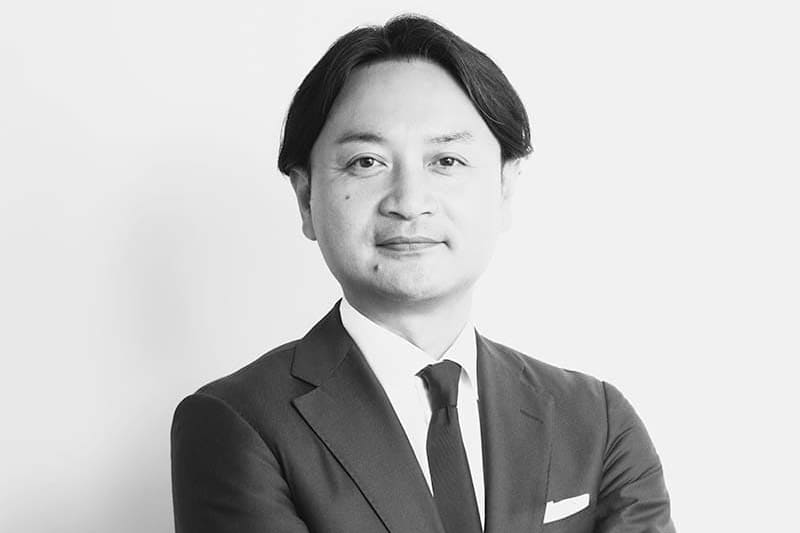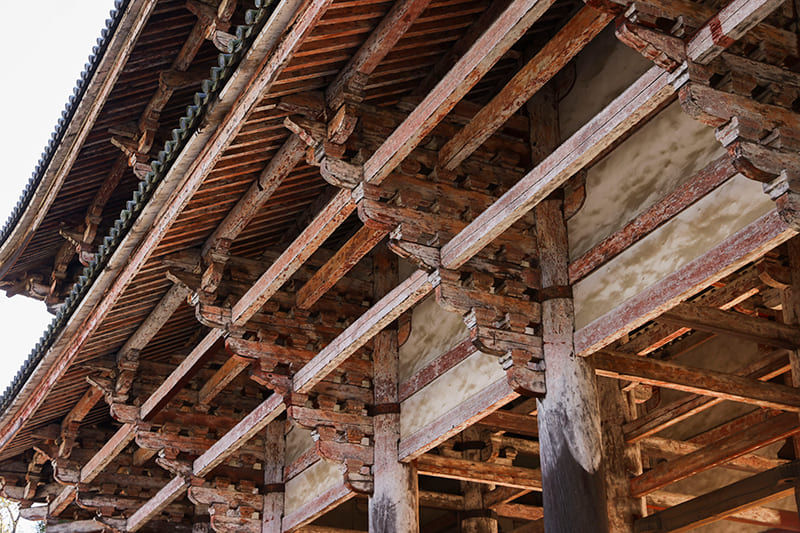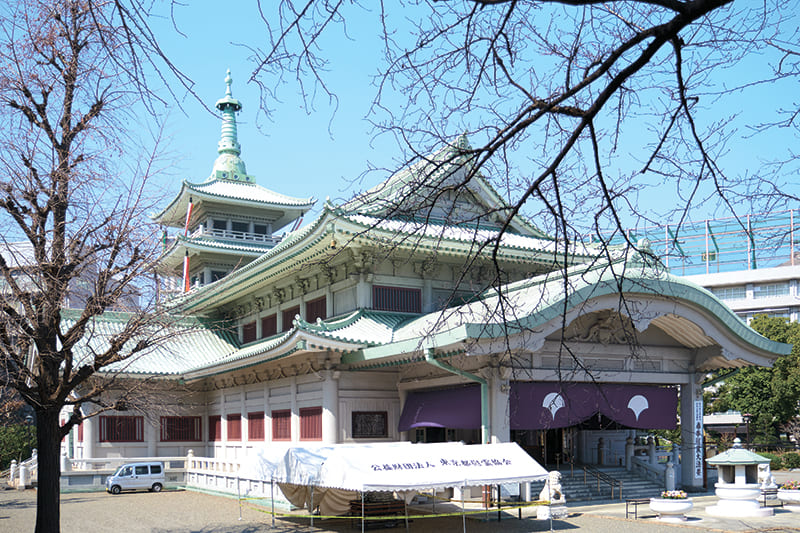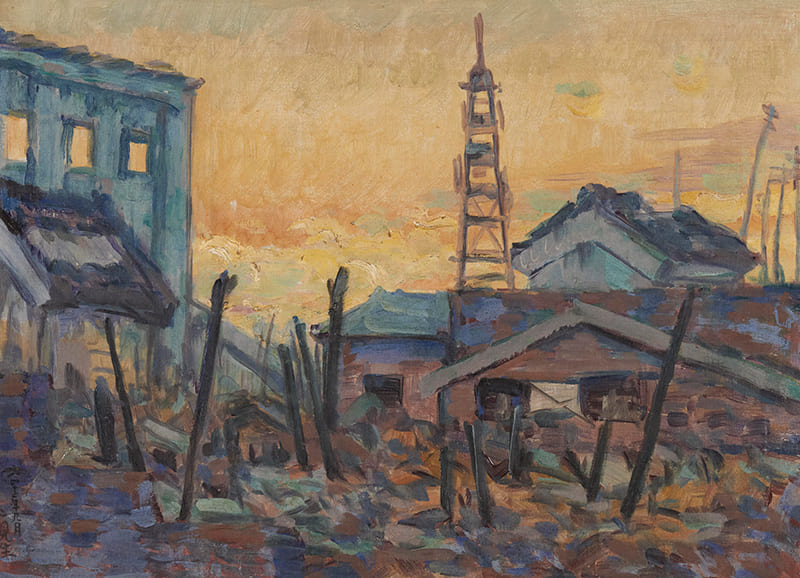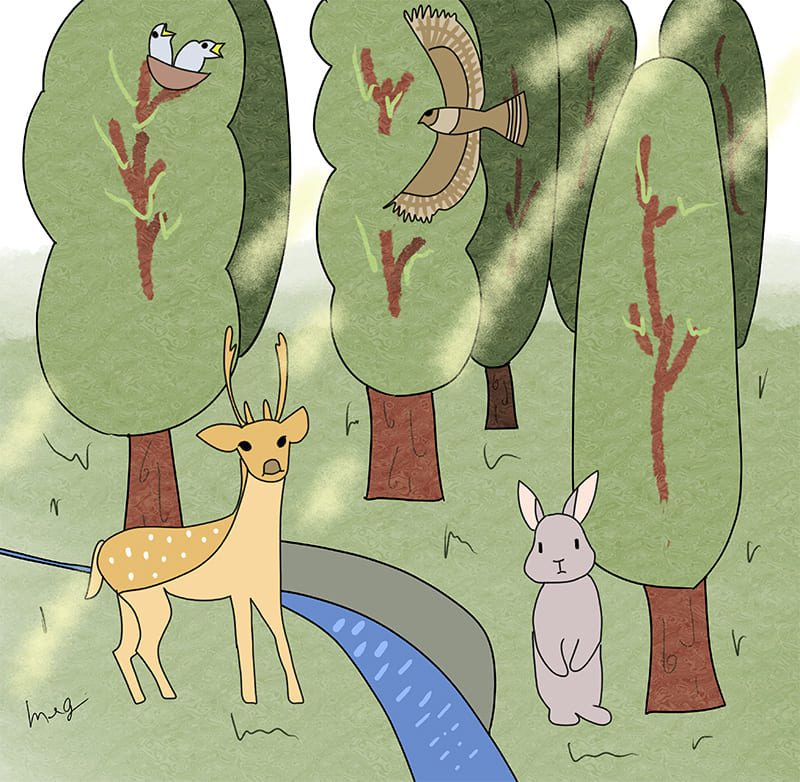January 26, 2024
How Todaiji temple protects treasures from fire
INTERVIEW
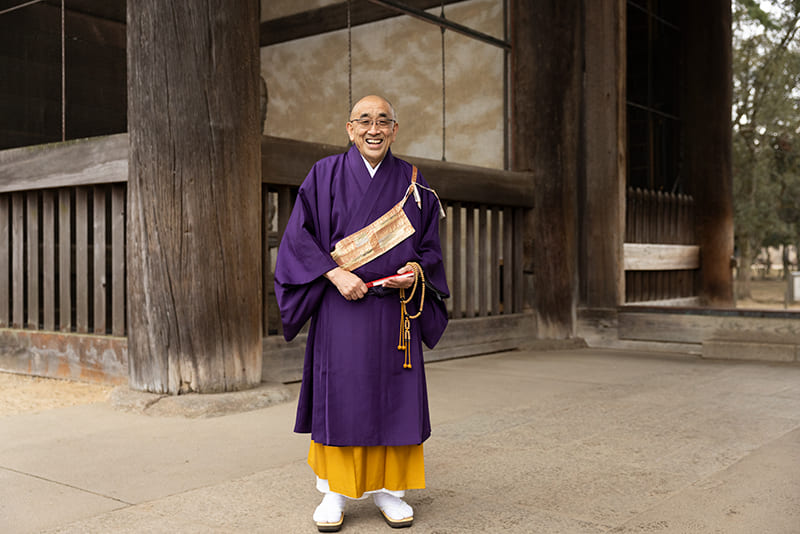
The fires that broke out at Notre Dame Cathedral in Paris and Shuri Castle in Okinawa in 2019 shocked the world. How could such cultural icons, which were World Heritage sites and had strict security and disaster prevention measures in place, sustain such damage? In the case of Notre Dame, it is believed the fire started in the roof trusses. In Western architecture, while the walls are often stone, the roof trusses are wood, so the upper part of the building is vulnerable to fire. In the case of Shuri Castle, the fire’s rapid spread is attributed to initial delays in the fire brigade’s response and also a lack of automated sprinklers.
In order to prevent a repeat of such disasters, steps are now being taken to ensure that the latest fire suppression systems are in place in Japan’s Registered Cultural Properties, 90% of which are made of wood.
One cultural property that has always been quick to implement fire suppression measures is Todaiji temple in Nara.
Todaiji’s history dates back nearly 1,300 years. It is located on a vast site of some 34 hectares that contains several Registered Cultural Properties, including the Great Buddha Hall, a National Treasure. However, Todaiji has been damaged in several disasters throughout its history, including wars in 1180 and 1567. Fires are particularly common, with 30 significant ones recorded, ranging from an accidental fire in a monks’ quarters and lecture hall in 917 to a blaze at the Senju-do hall in the Kaidan-in compound in 1998. The temple has the disadvantage of being integrated with Nara Park, meaning it is difficult to secure, with people free to come and go even at night.
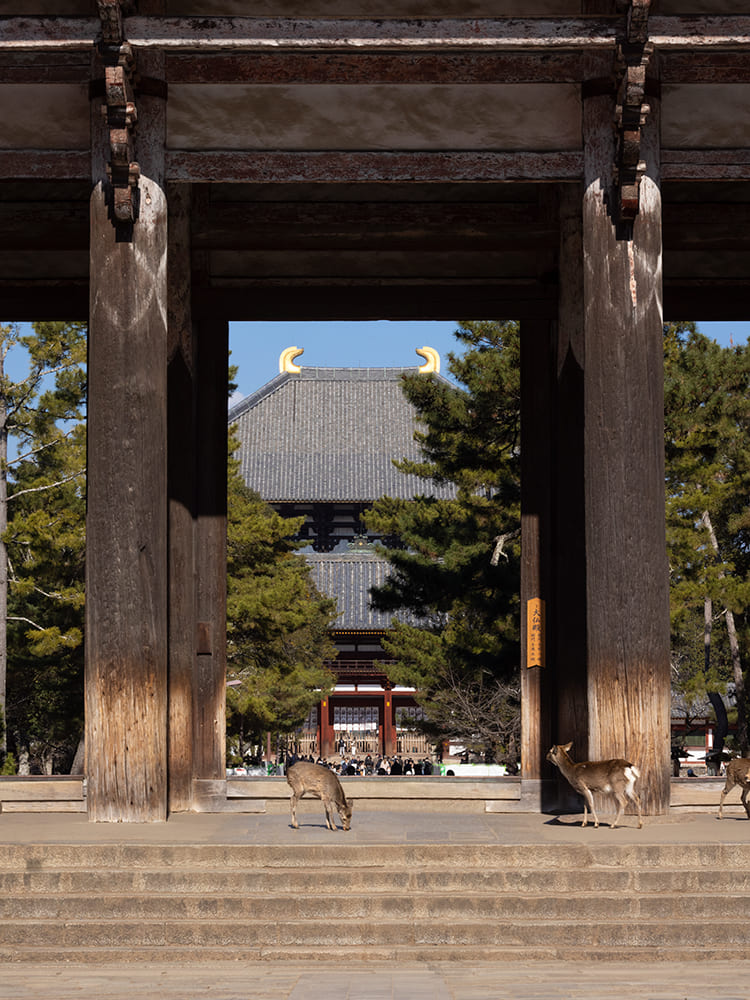
PHOTOS: YOSHIAKI TSUTSUI
For this reason, Todaiji has for many years implemented pioneering disaster prevention measures. Walk through the grounds and you notice disaster prevention equipment everywhere. In addition to fire hydrants and lightning rods, you can see boxes containing water cannons to hose down buildings and drencher heads to create fire-blocking curtains of water.
The Great Buddha Hall, a National Treasure and one of the largest wooden structures in the world, has particularly special measures in place. In 1913, it was the first cultural heritage building in Japan to be equipped with a drencher, and as part of major repairs conducted from 1977 to 1979, an automatic fire alarm and fire extinguishing equipment were installed. Then, as part of a 10-year project to improve disaster prevention measures from 1989 to 1999, fire hydrants and drenchers were installed for tunnel fires. In all, the hall contains a catalog of fire prevention technologies adopted from the Meiji Era (1868–1912) through to the present day.
The Great Buddha Hall incorporates a drencher because it is so big that water shot from water cannons would not reach the top. “Drenchers are difficult to install indoors because they can damage wooden statues and other arts and crafts, but it worked here because the Great Buddha statue itself is made of bronze,” explained Todaiji elder Fumon Kagawa. At the back of the Great Buddha Hall, piping to supply water to the drencher and a fire hydrant is visible. The drencher is highly effective, and could conceivably protect against the kind of fire that started in the roof trusses of Notre Dame.
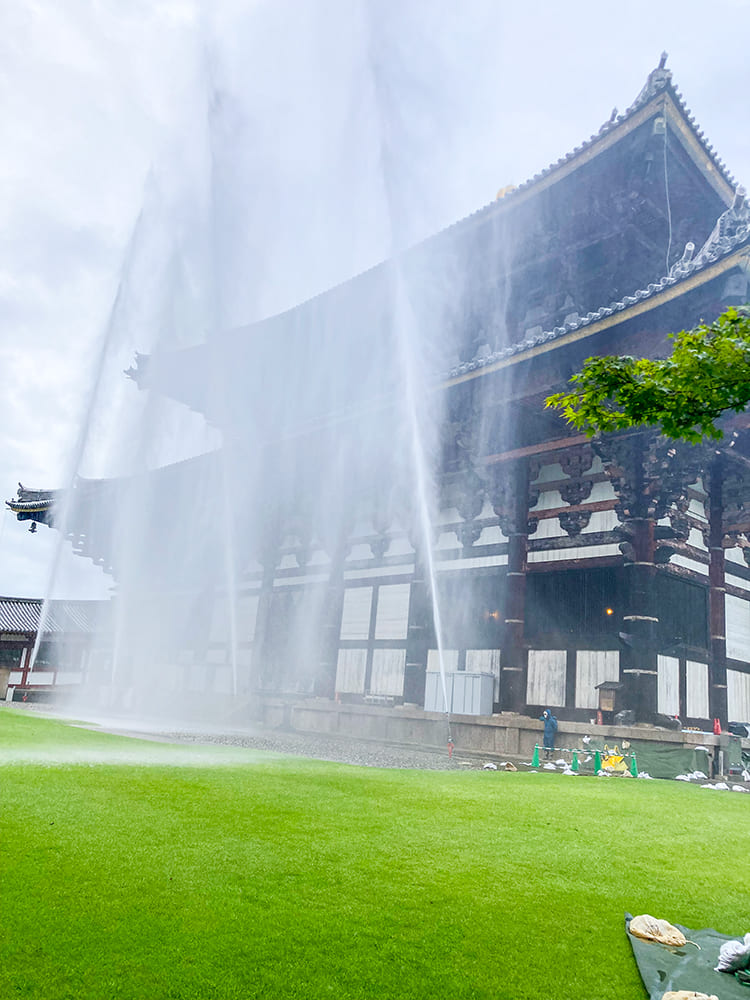
COURTESY: TODAIJI
According to Kagawa, the main challenge with disaster prevention equipment is that it must be updated constantly.
“During disaster prevention improvements in the 1990s, we installed a 1,500-ton water tank at an altitude of 200 meters, and buried 11 kilometers of piping underground. Water can be conveyed to the temple by the power of gravity, so it doesn’t need pumps or other electricity sources that would be susceptible to outages. It can be used at any time. There is probably no other cultural property that has installed underground piping on this scale. But it means we do have to deal with related issues, like water leaks. And when we did the digging for the pipes, we uncovered cultural properties that then needed to be conserved. Technology also constantly improves, so after 30 years, it will be necessary to redo everything. We have also seen increases in theft and graffiti, meaning the kind of deliberate vandalism we deal with has changed, and so we need to increase the number of security cameras.”
As a result, Todaiji has since 2021 been implementing a new five-year improvement plan to update alarms and fire-suppression equipment, and make the piping resistant to earthquakes.
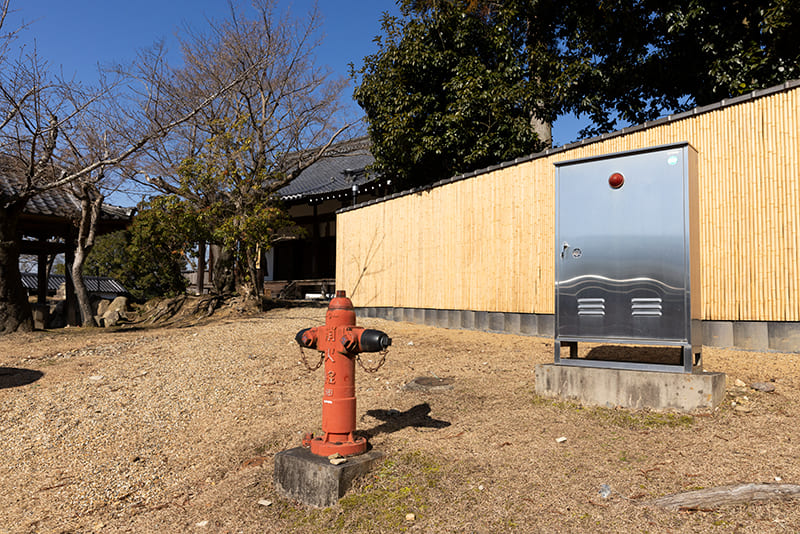
Earthquake disaster prevention is also essential for the temple itself. The Todaiji Cultural Center, which was completed in 2010, was the first in Japan to install an American-made seismic isolation device that can isolate each room separately, and the Sunlight Bodhisattva and Moonlight Bodhisattva statues (both National Treasures) were moved there from the Hokke-do hall along with other artifacts. For other buildings that are designated cultural properties, diagnosis on earthquake resistance is being carried out not only on the buildings but also on the underlying ground, and buildings that are found to have problems are being renovated in turn, like the corridors that were seismically reinforced in 2017.
“We reinforced the corridors of the Great Buddha Hall at our own expense. Todaiji, which does not have financial supporters like many other Buddhist temples, has no other option but to cover its maintenance costs through admission fees. Those costs run to ¥300 million to ¥400 million a year,” Kagawa said. “There are some areas that can be covered by subsidies, such as repairs and disaster prevention measures for National Treasures and Important Cultural Properties, but even still, maintaining cultural properties is expensive. We have fire alarms and lightning rods installed in all of the 300 buildings within the grounds, so when things break we have to keep repairing them.”
Still, Todaiji’s constant updates to its systems for protecting its cultural properties and preserving them for future generations appear to be of a global standard, as befits a World Heritage site.
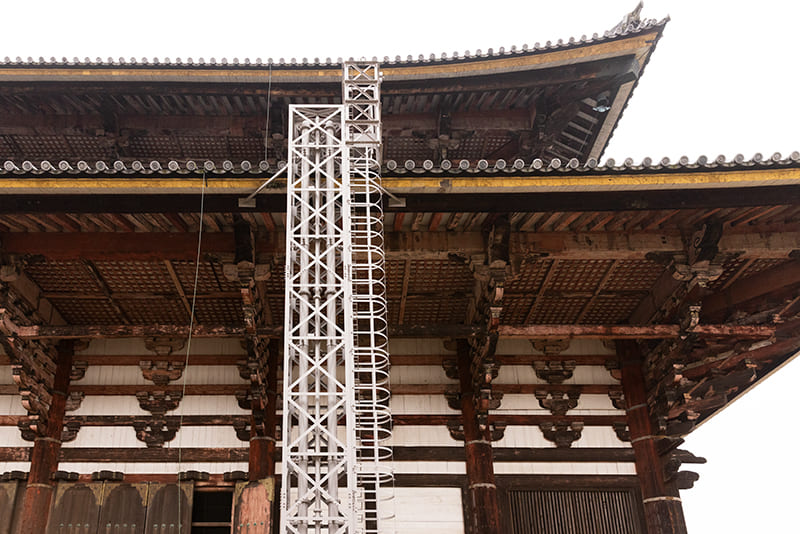
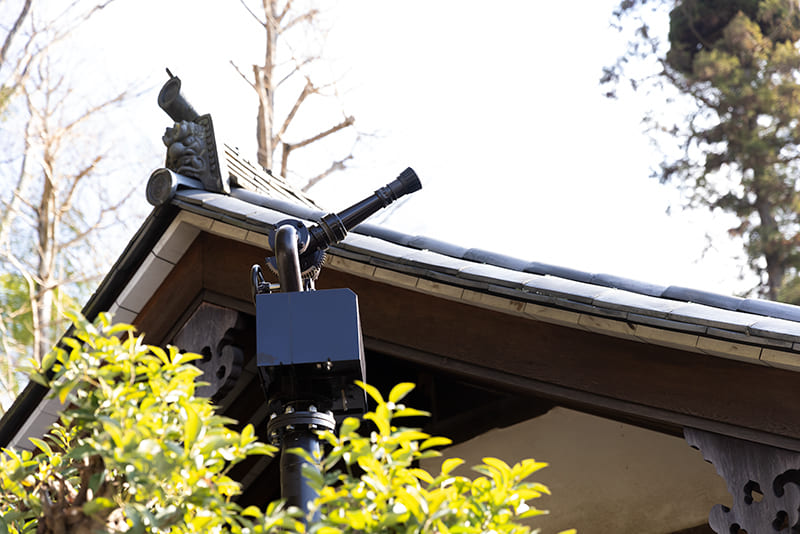
FUMON SAGAWA
Sagawa was born in Nara Prefecture in 1951. He entered the Buddhist priesthood in 1963 and completed a graduate degree in Buddhist studies at Ryukoku University in 1975. He was appointed as the 222nd chief priest of Todaiji temple in 2016 and reappointed as the 223rd chief priest in 2019, a position he held until 2022. He is currently an elder at Todaiji and president of the Todaiji Cultural Center. His father, Sogen, and grandfather Myoshun also served as the temple’s chief priest.
東大寺〜国宝建築を次世代へ伝える知恵。
奈良の東大寺は、積極的な防災対策を行う寺院である。1300年以上の歴史と多くの文化財を有し、1180年と1567年の戦火で壊滅的な被害を受けるなど大きな災害に何度も見舞われてきた。しかも夜間でも境内の出入りが自由であることなどの条件が、文化財の管理を複雑にしている。そのため東大寺は先進的な防災対策がなされ、境内には消火栓や避雷針だけでなく、放水銃やドレンチャーなど多岐にわたる設備が目に留まる。
〈大仏殿〉は特に世界最大級の木造建造物であり、1913年に文化財建造物として初のドレンチャー設備を備え、90年代にトンネル火災用の消火栓とドレンチャーが設置されるなど、時代ごとの最新技術が導入されてきた。
狹川普文長老によれば防災設備は絶えず更新が必要で、既存設備の不具合や、技術の進化に常に対応しなくてはならないという。そのため現在も2021年から5か年計画で警報設備や消火設備の機器類の更新、配管の耐震化などを進めている。文化財を守り抜き、未来へとつなぐために独自の工夫とたゆまぬ努力が続けられている。
Return to Sustainable Japan Magazine Vol. 32 article list page

